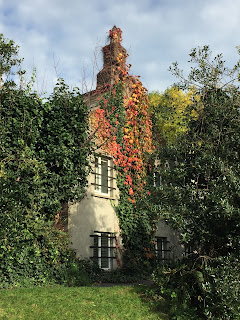Advent bring changes to everything – purple and rose, wreath and candle, even the very light that surrounds us, bargained with every day as we slip toward the winter solstice.
And if those who move in the circles of sacred music are doing their best, there are changes in our own sonic landscape as well. Restraint, hushed joy, anticipation: these are the unspoken attributes we try to encourage in our song.
Over the years, there have been a few acoustic colours I've adopted as we make our way through this season. The elements are intentional: moments of pausing and yearning on the guitar, texts that are wrapped around minor modes, all heralding the images put forth by Isaiah: calf and child and wolf and viper, mountaintops and clear highways.
One sonic technique, used in the past, conveys a beauty that is perfect for the Advent season – the use of handbells. Without a word, bells convey an immense richness. We use them to mark our time. They are usually rung from on high (drawing our heads away from this world and into the heavens). Merely striking them creates a resonance felt in the soul. When we hear them, we know something is about to be announced: the birth of a Saviour, the death of a loved one. And their ringing, even when it is random, has the ability to convey an aura of peace.
Take that peal of the handbells, and wed it to an ancient chant tune, and you have a piece of music that perfectly conveys the season of joyful anticipation.
Now, this is all well and good – if you have handbells. But my little ensemble is not equipped with such things.
Thankfully, I just happened to know a resource: the Notre Dame Handbell Choir, directed by my long-time colleague, Karen Kirner. So two weeks ago, I wrote to Karen, and asked if she could record a three-minute peal of the bells, in E-flat major. And last week the MP3 file arrived in my mailbox.
All I needed to do was download the file, and then plug an iPhone into Newman Church's sound system. And there it was – a soothing, compelling tintinnabulation, gently reverberating through the nave. Couple that with an evocative violinist and a text admonishing the assembly to "prepare the way" – and we were off.
It was a moment when one choir assisted another, even though thousands of miles and an ocean divided them. And it was a gladsome thing, to know that the peals and tones and overtones that were created in Northern Indiana could find their way into a house of prayer on Saint Stephen's Green in Dublin, Ireland. Handbells across the waters. What a fitting lead up to Gaudete.
And if those who move in the circles of sacred music are doing their best, there are changes in our own sonic landscape as well. Restraint, hushed joy, anticipation: these are the unspoken attributes we try to encourage in our song.
Over the years, there have been a few acoustic colours I've adopted as we make our way through this season. The elements are intentional: moments of pausing and yearning on the guitar, texts that are wrapped around minor modes, all heralding the images put forth by Isaiah: calf and child and wolf and viper, mountaintops and clear highways.
One sonic technique, used in the past, conveys a beauty that is perfect for the Advent season – the use of handbells. Without a word, bells convey an immense richness. We use them to mark our time. They are usually rung from on high (drawing our heads away from this world and into the heavens). Merely striking them creates a resonance felt in the soul. When we hear them, we know something is about to be announced: the birth of a Saviour, the death of a loved one. And their ringing, even when it is random, has the ability to convey an aura of peace.
Take that peal of the handbells, and wed it to an ancient chant tune, and you have a piece of music that perfectly conveys the season of joyful anticipation.
Now, this is all well and good – if you have handbells. But my little ensemble is not equipped with such things.
Thankfully, I just happened to know a resource: the Notre Dame Handbell Choir, directed by my long-time colleague, Karen Kirner. So two weeks ago, I wrote to Karen, and asked if she could record a three-minute peal of the bells, in E-flat major. And last week the MP3 file arrived in my mailbox.
All I needed to do was download the file, and then plug an iPhone into Newman Church's sound system. And there it was – a soothing, compelling tintinnabulation, gently reverberating through the nave. Couple that with an evocative violinist and a text admonishing the assembly to "prepare the way" – and we were off.
It was a moment when one choir assisted another, even though thousands of miles and an ocean divided them. And it was a gladsome thing, to know that the peals and tones and overtones that were created in Northern Indiana could find their way into a house of prayer on Saint Stephen's Green in Dublin, Ireland. Handbells across the waters. What a fitting lead up to Gaudete.


































